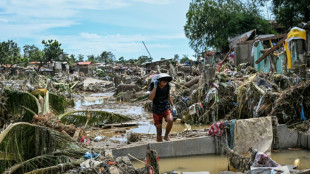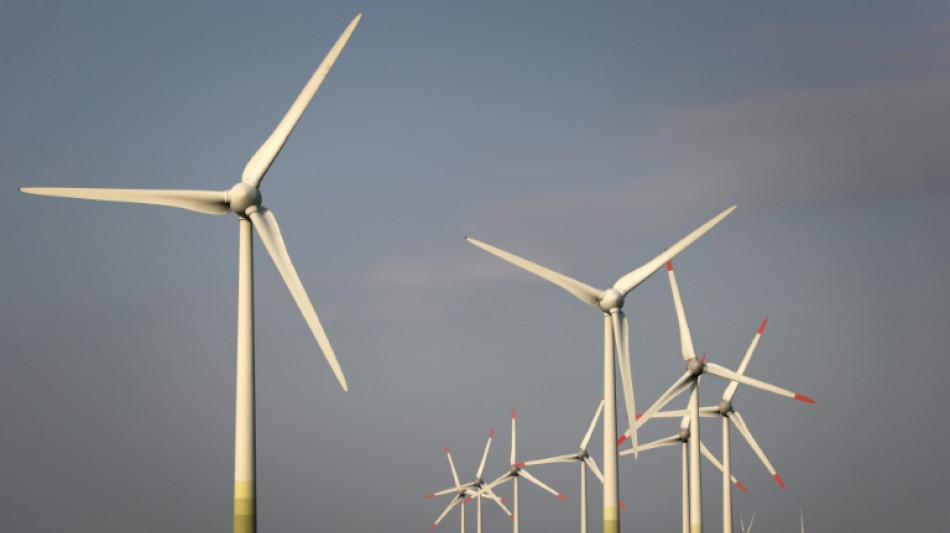
-
 Scandic Trust Group strengthens sales network with First Idea Consultant
Scandic Trust Group strengthens sales network with First Idea Consultant
-
France opt for Le Garrec as Dupont replacement for 'best team ever' South Africa

-
 Drugmaker AstraZeneca profit jumps as US business grows
Drugmaker AstraZeneca profit jumps as US business grows
-
'Vibe coding' named word of the year by Collins dictionary

-
 Vietnam evacuates thousands from coast ahead of Typhoon Kalmaegi
Vietnam evacuates thousands from coast ahead of Typhoon Kalmaegi
-
European stocks fall after gains in Asia, US
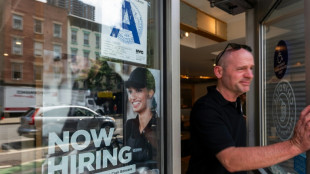
-
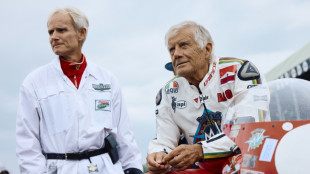 MotoGP legend Agostini admires Marc Marquez's 'desire to win'
MotoGP legend Agostini admires Marc Marquez's 'desire to win'
-
Nepal searches for avalanche victims

-
 Hezbollah rejects any negotiations between Lebanon and Israel
Hezbollah rejects any negotiations between Lebanon and Israel
-
Chapman blitz leads Black Caps to tight T20 victory over West Indies

-
 France urges EU to sanction Shein platform
France urges EU to sanction Shein platform
-
France opt for Le Garrec as Dupont replacement for South Africa Test

-
 Turmoil in tiaras at Miss Universe pageant in Thailand
Turmoil in tiaras at Miss Universe pageant in Thailand
-
Probe into Thales defence group looking at Indonesian contract

-
 US to cancel flights as longest govt shutdown drags on
US to cancel flights as longest govt shutdown drags on
-
Home in Nigeria, ex-refugees find themselves in a war zone

-
 Doncic's Lakers hold off Wembanyama's Spurs, Blazers silence Thunder
Doncic's Lakers hold off Wembanyama's Spurs, Blazers silence Thunder
-
For Turkey's LGBTQ community, draft law sparks existential alarm

-
 Musk's $1 trillion pay package to face Tesla shareholder vote
Musk's $1 trillion pay package to face Tesla shareholder vote
-
Tonga rugby league star out of intensive care after seizure

-
 Argentine ex-president Kirchner goes on trial in new corruption case
Argentine ex-president Kirchner goes on trial in new corruption case
-
Dams, housing, pensions: Franco disinformation flourishes online

-
 Endo returns as Japan look to build on Brazil win
Endo returns as Japan look to build on Brazil win
-
Franco captivates young Spaniards 50 years after death

-
 German steel industry girds for uncertain future
German steel industry girds for uncertain future
-
IPL champions Bengaluru could be sold for 'as much as $2 billion'

-
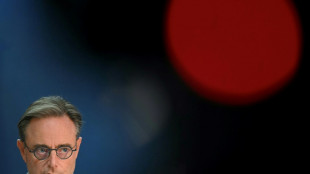 Budget impasse threatens Belgium's ruling coalition
Budget impasse threatens Belgium's ruling coalition
-
New Zealand ex-top cop admits to having material showing child abuse, bestiality

-
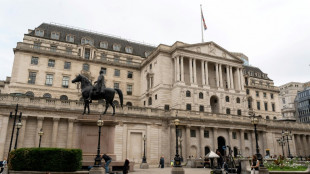 BoE set for finely balanced pre-budget rate call
BoE set for finely balanced pre-budget rate call
-
Australian kingpin obtains shorter sentence over drug charge

-
 Weatherald's unenviable Ashes task: fill giant hole at top left by Warner
Weatherald's unenviable Ashes task: fill giant hole at top left by Warner
-
Ovechkin first to score 900 NHL goals as Capitals beat Blues

-
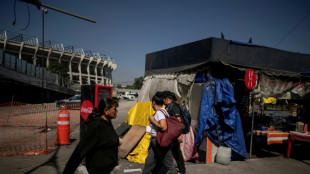 On Mexico City's streets, vendors fight to make it to World Cup
On Mexico City's streets, vendors fight to make it to World Cup
-
Asian markets bounce from selloff as US jobs beat forecasts
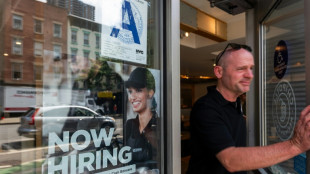
-
 Philippine death toll tops 140 as typhoon heads towards Vietnam
Philippine death toll tops 140 as typhoon heads towards Vietnam
-
Kyrgios targets 'miracle' Australian Open return after knee improves

-
 'AI president': Trump deepfakes glorify himself, trash rivals
'AI president': Trump deepfakes glorify himself, trash rivals
-
Belgium probes drone sightings after flights halted overnight
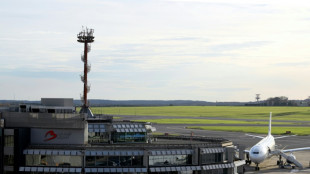
-
 Five things to know about 'forest COP' host city Belem
Five things to know about 'forest COP' host city Belem
-
World leaders to rally climate fight ahead of Amazon summit
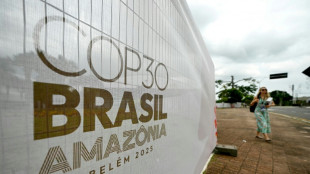
-
 Engine fell off US cargo plane before deadly crash: officials
Engine fell off US cargo plane before deadly crash: officials
-
Mexican leader calls for tougher sexual harassment laws after attack

-
 Meghan Markle set for big screen return: reports
Meghan Markle set for big screen return: reports
-
Japan deploys troops after wave of deadly bear attacks

-
 Thermon Reports Second Quarter Fiscal 2026 Results
Thermon Reports Second Quarter Fiscal 2026 Results
-
Zomedica Achieves ISO 13485 Certification, Underscoring Strengthened Quality Infrastructure and Commercial Potential

-
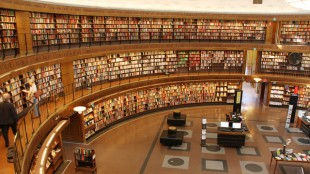 Jaguar Mining Reports Solid Third Quarter 2025 Financial Results Driven by Strong Gold Prices and Pilar Performance
Jaguar Mining Reports Solid Third Quarter 2025 Financial Results Driven by Strong Gold Prices and Pilar Performance
-
MainStreetChamber Holdings, Inc. Announces the National Launch of kathy ireland(R) Laundry's "Laundry Concierge" Program
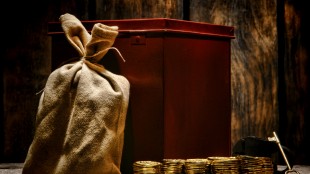
-
 Stillwater Critical Minerals Provides Corporate Update
Stillwater Critical Minerals Provides Corporate Update
-
SlicedHealth Elevates Hospital Contract Intelligence with SlicedIQ


The tricky path to tripling renewable energy capacity
Significant hurdles lie ahead of the G20's renewable energy target agreed in New Delhi last weekend, but the ambitious goal is feasible, experts say.
G20 leaders pledged to triple global renewable energy capacity by 2030, in a bid to accelerate the clean energy transition and fight climate change.
That pledge by the group of wealthy nations -- responsible for around 80 percent of greenhouse gas emissions -- is in line with what experts say is possible and necessary to keep the world's climate goals in sight.
It adds to the momentum on renewables ahead of crunch UN climate talks beginning in Dubai on November 30.
But the group, which includes major oil and gas producers Saudi Arabia and Russia, failed to agree on phasing out fossil fuels.
- Why triple renewables? -
Boosting renewable energy capacity is essential to reduce fossil fuel consumption and achieve net-zero emissions, consistent with limiting global warming to 1.5 degrees Celsius above pre-industrial levels -- the more ambitious goal of the 2015 Paris agreement.
Tripling capacity by 2030 "is an ambitious yet achievable goal", according to the International Energy Agency (IEA), but it requires "stronger policy actions by governments".
This growth will be a key lever to slash fossil fuel demand, the IEA said, estimating it would avoid seven billion tonnes of CO2 polluting the atmosphere from 2023 to 2030.
It would also cover the growth of electricity demand linked to transport, heating and an expected surge in demand for air conditioning, the agency said.
The IEA added that the amount of electricity coming from coal -- the biggest source of CO2 -- could be halved.
For Dave Jones, an analyst at think tank Ember, the renewable energy pledge came as a pleasant surprise as previous discussion had focused on hydrogen or carbon capture and storage technology.
"It's a complete game changer for the possibility to be able to agree something" at the Dubai climate talks, he told AFP.
The other technologies are going to be useful, he said, "but they are not going to be the driving force behind the solution".
- What are the targets? -
Renewable energy production would need to soar from 3,600 Gigawatts (GW) as of late 2022 to 11,000 GW in 2030, said Jones.
The world installed 300 GW of new capacity last year and is aiming for up to an additional 500 GW in 2023, but annual growth must reach 1,500 GW by 2030.
And with fossil fuel prices and energy insecurity spiking after Russia's invasion of Ukraine, the IEA expects an unprecedented increase in new renewable energy capacity of around 30 percent in 2023.
Progress is already underway. Between 2015 and 2022, renewable energy facilities grew by 11 percent each year on average.
Solar energy has made great strides, with China potentially hitting its 2030 objective of 1,200 GW five years early.
The manufacturing of components is now outstripping demand and is due to reach 1,000 GW per year in 2024, with projects in China, the United States, Europe and India leading the way.
But wind power is going through a turbulent time, as rising costs and interest rates hamper the industry's ability to meet demand.
- How to get there? -
Solar, wind, hydroelectric power, geothermal and biomass are tried and tested technologies that can usually be deployed quickly.
But they also need investment, particularly in emerging and developing countries.
Supply chains must be made more resilient, while the integration of solar and wind needs to be secure and cost-effective, the IEA said.
Last year, one terawatt of global solar and wind capacity never came to fruition due to a lack of suitable electric networks and permits, according to international policy network REN21.
Its executive director Rana Adib said the world was a long way off raising the necessary cash, which she put at $4 trillion per year, adding that the G20 statement lacked concrete commitments.
In July, the UN's trade and development agency UNCTAD said that fossil fuel subsidies around the world amounted to a record $1 trillion in 2022 -- eight times the value of subsidies provided to renewable energy.
International investment in renewable energy has nearly tripled since the 2015 Paris climate accord, UNCTAD noted in its annual World Investment Report.
However, it said much of the growth was in richer nations.
D.Cunningha--AMWN
